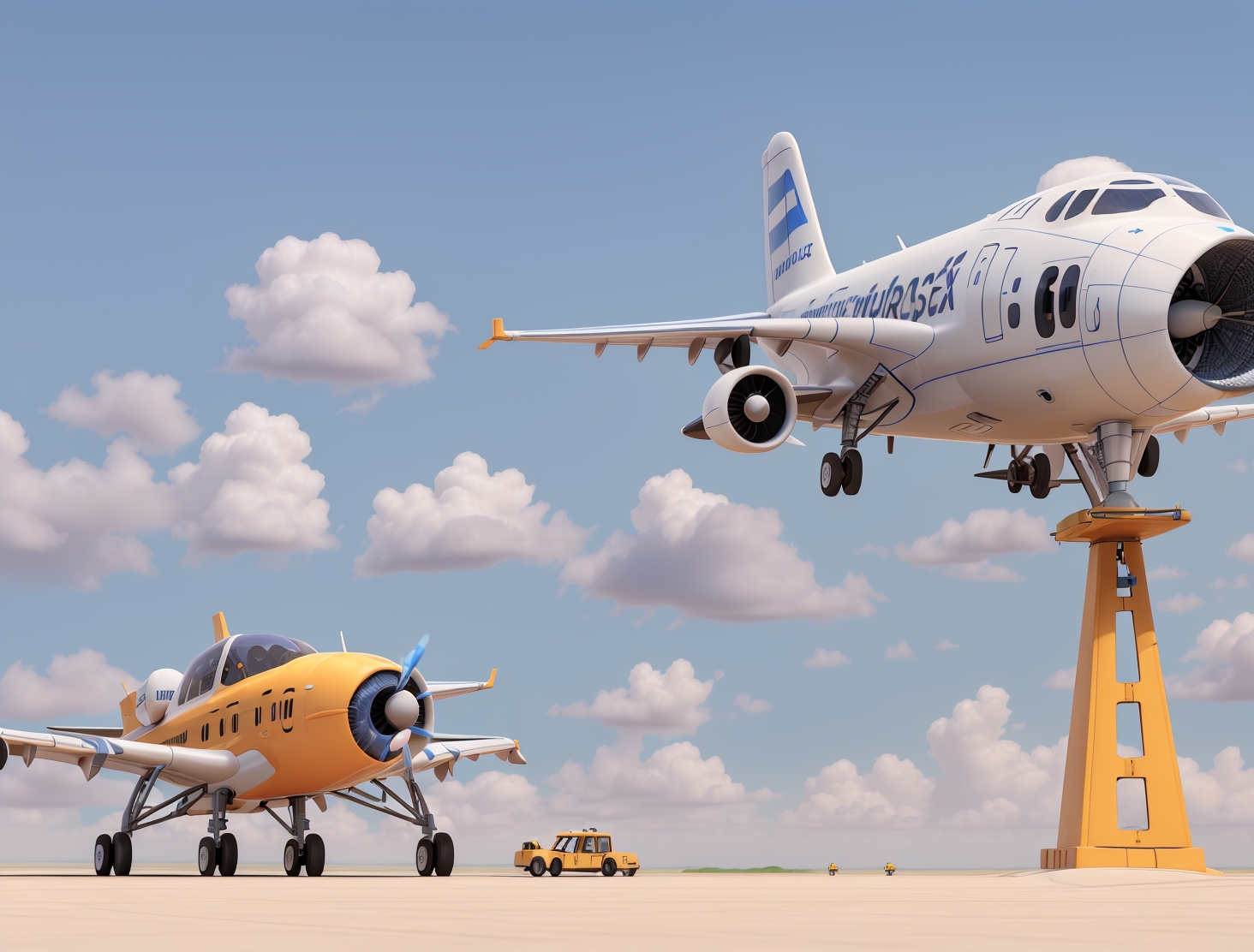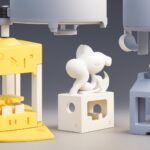The Use of 3D Printing in the Aerospace Industry
The Use of 3D Printing in the Aerospace Industry
3D printing is revolutionizing the aerospace industry, enabling the production of lightweight components, complex geometries, and parts for aircraft and space exploration. This innovative approach, known as additive manufacturing, offers significant advantages over traditional manufacturing methods, including weight reduction, cost savings, and design flexibility. These benefits make 3D printing in aerospace a key driver of future advancements.
Why 3D Printing is Transforming Aerospace
Lightweight Components: One of the most significant advantages of 3D printing in aerospace is the ability to create lightweight components. Reducing the weight of aircraft and spacecraft is crucial for improving fuel efficiency, reducing emissions, and increasing payload capacity. With additive manufacturing, engineers can produce components with optimized designs that minimize weight without sacrificing strength or durability.
Complex Geometries: Aerospace components often require intricate shapes and internal structures that are difficult to achieve with traditional methods. 3D printing allows for the creation of complex geometries, such as lattice structures and integrated cooling channels, that enhance performance while reducing material usage. This is particularly useful in producing engine parts and spacecraft components.
On-Demand Production: Additive manufacturing enables on-demand production of parts, reducing the need for large inventories and long lead times. This is especially valuable in the aerospace industry, where spare parts for aircraft and space missions can be produced as needed, potentially even in remote locations like the International Space Station (ISS).
Cost Savings: Traditional manufacturing methods often involve expensive tooling and machining processes, especially for low-volume production. 3D printing eliminates the need for specialized tooling, significantly reducing production costs. Additionally, additive manufacturing minimizes material waste, as parts are built layer by layer with minimal excess.
Applications of 3D Printing in the Aerospace Industry
Aircraft Components:
3D printing is used to produce a variety of aircraft components, including brackets, ducts, and structural elements. These parts benefit from weight reduction and improved aerodynamic performance, contributing to overall fuel efficiency.
Airbus and Boeing are incorporating 3D printed parts in their aircraft, such as engine brackets and interior components, which help reduce the weight of the aircraft and simplify assembly processes.
Engine Parts:
Additive manufacturing is particularly valuable for producing jet engine components, such as fuel nozzles and turbine blades. These parts require complex internal structures for optimal cooling and performance, which can be achieved more efficiently through 3D printing.
Companies like GE Aviation have successfully integrated 3D printed fuel nozzles into their engines, resulting in a component that is both lighter and stronger than its conventionally manufactured counterpart.
Space Exploration:
3D printing in space is enabling new possibilities for off-Earth manufacturing, where parts can be produced on-demand to support space missions. For example, the ISS has a 3D printer that allows astronauts to create tools and replacement parts in orbit, reducing the need to transport spare parts from Earth.
Future missions to the Moon and Mars may utilize 3D printing technology to construct habitats using locally available materials, such as lunar or Martian regolith, providing a sustainable approach to off-world construction.
Rocket Components:
Rocket manufacturers are using 3D printing to create components like engine nozzles, combustion chambers, and structural parts. The ability to produce complex geometries and reduce part count simplifies assembly and increases the reliability of rocket engines.
Companies such as SpaceX and Rocket Lab are at the forefront of using additive manufacturing for producing entire rocket engines and components, streamlining the production process and accelerating development timelines.
Materials Used in 3D Printing for Aerospace
Metal Alloys:
Metal 3D printing, also known as metal additive manufacturing, is commonly used in the aerospace sector. High-performance alloys such as titanium, Inconel, and aluminum are popular choices due to their strength, heat resistance, and lightweight properties.
Titanium alloys are especially favored for aircraft parts and spacecraft components due to their high strength-to-weight ratio.
High-Performance Polymers:
3D printing with high-performance polymers like PEEK (polyether ether ketone) and ULTEM is used to produce components that require chemical resistance and high-temperature tolerance. These materials are often utilized for interior cabin components and non-critical structural parts.
Composite Materials:
Composite 3D printing combines polymers with carbon fiber or glass fiber reinforcements to create lightweight and strong parts. This technology is used in the production of aircraft components such as brackets and panels.
Challenges and Limitations
Certification and Regulations:
The aerospace industry is heavily regulated, and 3D printed components must meet stringent safety and quality standards. Obtaining certification for additively manufactured parts can be a time-consuming process.
Material Properties:
While 3D printing materials have advanced, they may still not match the properties of traditional materials in some cases. Research is ongoing to develop new materials that can meet the demanding requirements of aerospace applications.
Production Speed:
3D printing can be slower than traditional manufacturing methods, especially for large parts. However, advancements in printing technology are addressing this limitation by developing faster and more efficient machines.
The Future of 3D Printing in Aerospace
The future of 3D printing in aerospace looks promising, with continued advancements in materials, printing techniques, and design software. Key areas of development include:
Large-Scale 3D Printing: New technologies are being developed to enable the 3D printing of large aerospace components, such as entire wings or fuselage sections, potentially revolutionizing aircraft manufacturing.
Integration with AI and Machine Learning: AI-driven design tools can optimize the structure of 3D printed parts to achieve the best balance between weight reduction and strength.
Sustainable Manufacturing: Additive manufacturing supports sustainability in the aerospace industry by reducing material waste and enabling the use of recyclable materials.
Advanced Materials Development: Ongoing research is focused on creating new alloys and composite materials specifically designed for 3D printing, which will enhance the performance and durability of aerospace components.



